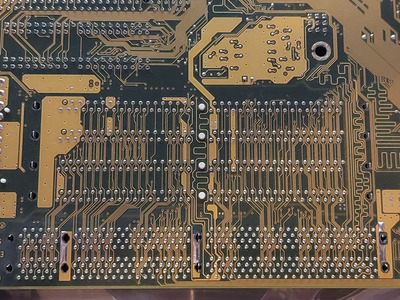BitWrangler wrote on 2022-11-08, 04:32:
I'm thinking I came across a 430VX board that had a 5v/3.3V jumper, so might just be automagic detection that's unique to TX.
I don't see a way how auto-detection of 3.3V SIMMs could work. The presence detect encoding is highly ambiguos and missing on most SIMMs anyway, and there seems to be no other 3V indicator. Once could try to auto-detect voltage on DIMMs, assuming that you can read the SPD EEPROM at 3.3V supply voltage even for 5V EDO DIMMs (which might be possible), and one could auto-detect whether a module is installed in a SIMM or a DIMM socket and auto-switch to 3.3V supply voltage if a DIMM is inserted.
Also remember we are not talking about the voltage on the data pins. Already the HX chipset outputs something like 3.0-3.3V for high and 0-0.3V for low, which will be correctly interpreted by both 5V TTL-compatible SIMMs (they decode everything above 2.5V or even 2.0V as "high") and 3.3V CMOS-compatible SIMMs (they decode evertything above 2V as high as well). Also, the HX chipset is designed in a way that it perfectly works with SIMMs outputting 5V on the data lines. The only voltage we are talking about is the supply voltage, which is not controlled by the chipset. The question of supporting 3.3V SIMMs depends on board design, not on the chipset. The chipset is only supporting evidence. For example, SDRAM supports started to appear with the 430VX and started to have acceptable performance with the TX chipset. SDRAM DIMMs generally require 3.3V supply voltage. That's why SDRAM usually support implies that there is way to select 3.3V RAM voltage (usually using jumpers, not automagic, though). The HX chipset makes SDRAM support impossible and thus 3.3V memory support is far less likely on (consumer-level) HX-based boards.
When I got the first 430HX based PC in 1996, it was equipped with 16MB of RAM, which seemed enough at that time (that is, it had 2 8MB SIMMs). And there are plenty of 5V 8MB and 16MB SIMMs. It makes sense that 3.3V SIMMs using newer chips with smaller structure sizes were only common on 64MB and 128MB SIMMs, and those SIMMs were only affordable to server operators at that time, so it is understandable why a server board would support 3.3V memory, whereas no one cared about desktop boards supporting them.
